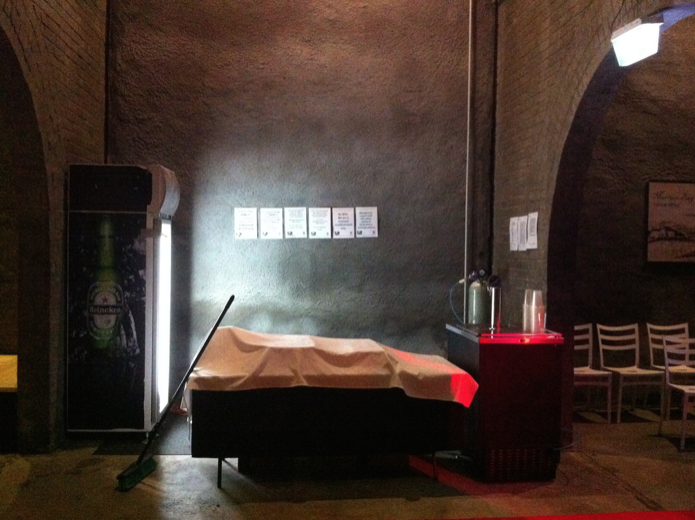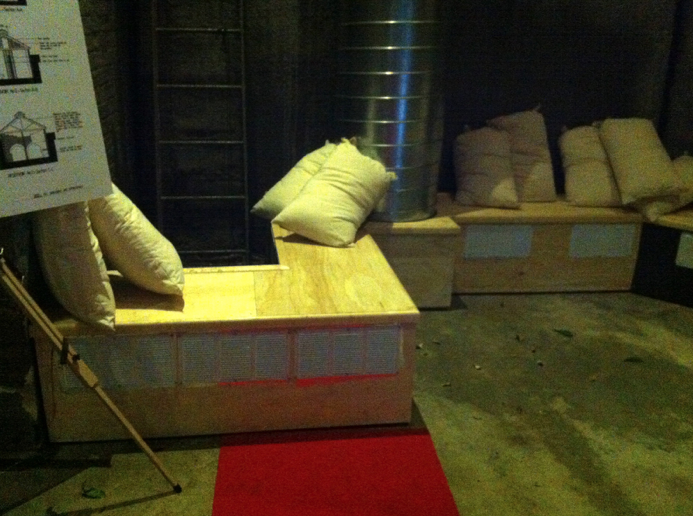The Reservoirs: A Best Practice Example of Adaptive Re-use
The Wickham Terrace water reservoirs in Brisbane
For the last couple of weeks I volunteered as a tour guide at the Wickham Terrace water reservoirs in Brisbane, which have been open to the public for the first time in their history. The reservoirs are located behind the much better known windmill and were built to house the water supply for early Brisbane but have long been obsolete and empty. The first reservoir on this site was built in 1871 and the other one is from 1882. They are on the Queensland Heritage Register and you can read the very informative history here.
Opening old places to the public can often present many challenges, especially those places that were never meant to have people in them at all. How this has been undertaken at the reservoirs is a case study in best heritage practice, so I just wanted to spend a little bit of time discussing how it was done. I also wanted to congratulate Bruce Edwards from the Underground Opera Company (http://www.undergroundopera.com.au/) for his vision and an outstanding achievement. Thanks also have to go to the National Trust of Queensland (http://www.nationaltrust.org.au/qld/Home) for facilitating Bruce’s idea and helping make it happen and to Brisbane City Council for coming on board.
But firstly, some background. The awkwardly named Australia ICOMOS Charter for Places of Cultural Significance is THE document that guides the conservation and management of heritage places in Australia. Its nickname is The Burra Charter, as it was first adopted at an ICOMOS (International Council on Monuments and Sites) meeting held in Burra, South Australia. You can download it here if you are interested: http://australia.icomos.org/publications/burra-charter-practice-notes/. One of The Burra Charter’s mantras when altering heritage places is to “do as much as necessary but as little as possible”. Ideally, when the place stops being used, everything should be able to be removed, leaving no evidence behind. This philosophy has certainly been embraced when adapting the reservoirs for use as an opera venue.
One of the most important things to prevent when an old place is being re-used is to ensure that damage to the original fabric (i.e. building materials, decoration, fittings, fixtures etc) is prevented, or at least minimised. If a place is heritage listed, as the reservoirs are, (Queensland Heritage Register and Brisbane City Council Heritage Register) it is a legal requirement to get permission to make changes to it and the permit issued may specify what you can and can’t do. But in addition, you have to meet the owner’s requirements (in this case Brisbane City Council) and also make sure it is up to code for safety, emergency egress etc. Now to run an opera and have tours through a disused service reservoir which is basically a pit in the ground, you are obviously going to need a few basic things- access stairs, electricity, lighting, sound, seats, a stage, ventilation, signage and toilets, just to name a few. So how do you install all of these without damaging the 132 year old fabric of the reservoir and whilst keeping everyone happy? (Please excuse my crappy photos, I only had my phone with me and it struggled in the dark interior!)
STAIRS
Exterior and interior steel demountable stairs were installed at either end of the reservoir. They are free standing and do not attach to any part of the walls or floor. Having two exit points satisfied the requirements for emergency egress from the venue. If the venue was to be used full time, a lift would probably have to be installed to allow equitable access.
Exterior steel demountable stairs at Wickham Terrace end of the reservoir
Interior steel demountable stairs at the Wickham Terrace end of the of the reservoir
ELECTRICITY
Lighting and sound equipment were all suspended from tracks running across the timber beams of the reservoir. The tracks weren’t screwed or nailed into the timber, they just rested on top and connected to an exterior power source. Similarly, power outlets were hung down over the edge of the reservoir where required, such as in the corner of the bar area.
Lighting and sound equipment suspended from tracks running across the timber beams of the reservoir
Bar area showing white power conduit hanging down in corner on right hand side
Lighting mounted on tracks running across beams of reservoir
STAGE AND SEATS
The stage and all seating was free standing. Once the venue is no longer in use, they can all be removed without any evidence of them remaining.
Free standing chairs and timber box seatingFree standing chairs and timber box seating
VETILATION
A ventilation system was inserted to circulate the air. This big silver bad boy attaches to vents at floor level, which also double as seats. Again nothing is fixed into the reservoir, it is all free standing.
Ventilation Unit
Timber box seats with air vents at floor level, all free standing
SIGNAGE
All information posters and emergency exit signs were suspended from the timber of the roof, the tracks or over the top of the walls. This avoided having to put fixings into the original fabric of the reservoirs.
Emergency exit light suspended from tracks resting on the timber beams of the reservoir
TOILETS
Rather than trying to install toilets within the reservoir, which would have required a lot of alterations, a temporary portable bathroom block was set up at the back of the reservoir.
FINAL THOUGHTS
Now, some of you may be thinking that the best way to prevent ANY damage is to not allow public access at all to these precious spaces. Absolutely correct. However, in my opinion, if old spaces are locked up and mouldering away without anyone being able to appreciate them, they may as well be demolished. After all, what are we keeping them for if they are of heritage significance, but no one can view or appreciate or learn from what makes a place so? I think the best way to conserve a place is to have people visit it, see its importance first hand and – hopefully – get excited about these wonderful places and embrace them. This can only lead to sense of shared ownership of our heritage places and therefore a more powerful incentive to retain them. I think this use of the reservoirs is a fantastic example of how you can utilise these spaces without having any impact on what makes them of heritage significance or historical importance.











